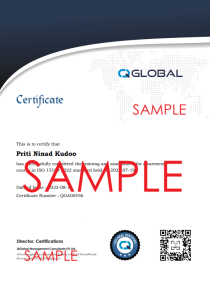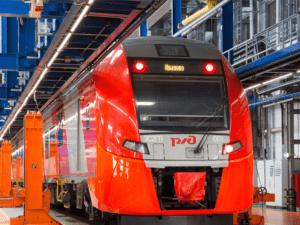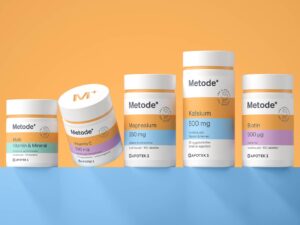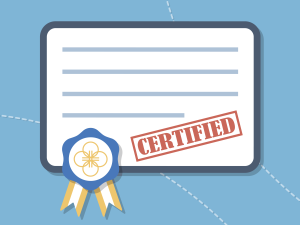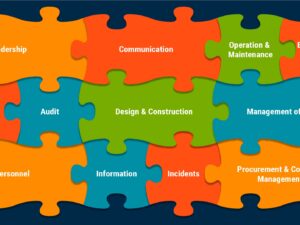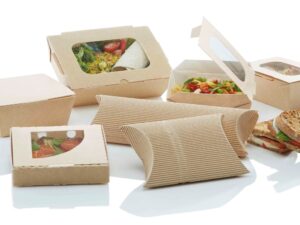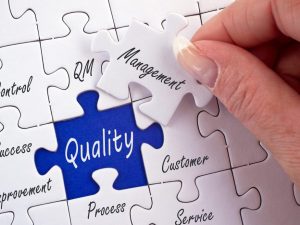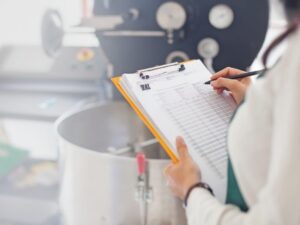BRC Food Safety Standard Issue 9 - Lead Implementer Course
- Description
- Curriculum

The BRC Global Standard for Food Safety is developed by food industry experts from retailers, manufacturers and food service organizations to ensure it is rigorous and detailed, yet easy to understand. First published in 1998, the BRC Food Safety Standard is well-established globally. It has evolved with input from many leading global businesses. BRC Food Safety Standard provides a framework to manage product safety, integrity, legality and quality, and the operational controls for these criteria in the food manufacturing industry. An effective implementation is essential for organizations to maximize the performance and benefits of BRC food safety standards. BRC lead implementer course is good for those who need an overview on the BRC standards, or those who will be involved in the implementation of BRC standards within an organization. This course will guide you through the implementation process by explaining the requirements of BRC standards and how they can be applied using international best practices. Using a step-by-step approach, you will learn how to develop an implementation plan, create the necessary documentation, monitor the food safety management system, and achieve continual system improvement.
Who Should Attend?
- Anyone responsible for implementing BRC food safety standard
- Those who want to learn how to interpret the requirements of BRC food safety standard
- Managers or executives involved in ensuring food safety
- Heads of various departments in an organisation
- Anyone looking to gain skills and knowledge in the food safety management system to improve their career performance
- Jobseekers interested in understanding the best food safety management practices followed by the organizations
Key Benefits
- Understand concepts and importance of the BRC management system
- Grasp the application of risk-based thinking, leadership and process management
- Interpret requirements of BRC food safety standard and its effective application for managing and improving the functioning of an organization through process approach.
- Understand and develop skills for implementation of management system to manage processes of the organization.
- Build stakeholder confidence by managing processes in line with the latest requirements
- Understand and develop problem solving skills
- Maintain and continually improve an organisation’s food safety management system
- Learn techniques to create and manage documents and records relevant to BRC food safety management system , critical to the products and services delivered and those required to meet customer and regulatory requirements
- Learn skills in human resource management, supplier management, customer management , operations management, inventory management, laboratory management, production planning and logistics management to ensure compliance to BRC food safety management system
- Learn to identify and mitigate internal and external food safety issues relevant to businesses
- Learn to identify stakeholder expectations on food safety performance and prepare action plans to fulfill them
- Learn to define and optimize the processes in your organisation
- Identify improvement objectives and plans to achieve them
- Develop an effective communication plan
- Learn to manage design and development activities to ensure compliance to BRC food safety management system
- Fill gaps in your professional knowledge
Learning & Evaluation Method
This is a live and interactive course. Once you purchase the course, our team will contact you to plan the training. No matter where you are located, we schedule the classes based on your convenience and time zone. You can plan to attend the training in sessions of 4 or 8 hr duration, based on how much time you can spend in a day.
Certification
There are increasing numbers of organizations, who prefer candidates those who have certain certifications from recognized programs. Certification demonstrates your commitment to superior professionalism, upholding industry standards, and continued learning. These merits can help boost your professional credibility and prestige within your own network, in your organisation, with your current clients, and when pursuing new business opportunities. After the successful completion of the course and final exam, you will be awarded with a certificate of completion issued by QGlobal. Your credentials will be made available in the global online directory and can be verified by anyone searching with the certificate number. Without doubt we can say that our training courses are well recognized and sought after by organizations across various geographies.
Buy for group Are you planning to buy this course for a group? We have the best prices for you! Select ‘Buy for Group’ option and add to the cart. You will get a discount of 60 – 75% for a group of up to 10 participants. To make a group purchase, create your group name and add individual emails of up to 10 participants. Each participant will get the access to the course materials, exam and the certificate. We will arrange one live-online session for the entire group.
Total: 206 Courses View all
-
1Introduction to standards and certification
- Purpose of standardization
- Benefits of certification
-
2Importance of food safety
-
3Introduction to BRC FOOD SAFETY ISSUE 9
- Benefits of BRC certification
-
4BRC FOOD SAFETY ISSUE 9 Senior Management Commitment
- Senior management commitment and continual improvement
- Organizational structure, responsibilities and management authority
-
5BRC FOOD SAFETY ISSUE 9 The Food Safety Plan
- HACCP food safety team ( Equivalent to codex alimentarius step 1)
- Prerequisite programmesProduct description (Equivalent to codex alimentarius step 2)
- To identify intended use ( Equivalent to codex alimentarius step 3)
- Records of process flow ( Equivalent to codex alimentarius step 4)
- Verification of process flow ( Equivalent to codex alimentarius step 5)
- List of potential hazards associated with each process step, hazard Analysis and measures to control identified hazards (Equivalent to codex Alimentarius step 6)
- Critical control points (Equivalent to codex alimentarius step 7)
- Critical control limits for each CCP (Equivalent to codex alimentarius Step 8)
- Establishing monitoring system for each CCP (Equivalent to codexalimentarius step 9)
- Establish a corrective action plan – Codex Alimentarius Step 10, Principle 5
- Establish verification procedures – Codex Alimentarius Step 11, Principle 6
- HACCP documentation and record keeping – Codex Alimentarius Step 12,Principle 7
- Review the HACCP plan
-
6BRC FOOD SAFETY ISSUE 9 Food safety and quality management system
- Food safety and quality manual
- Document control
- Record completion and maintenance
- Internal audits – Food safety and quality management audits
- Supplier and raw material approval and performance monitoring
- Management of suppliers of raw materials and packaging
- Raw material and packaging acceptance and monitoring
- Procedures
- Management of suppliers of services
- Management of subcontracted, outsourced processing
- Specifications
- Corrective and preventive actions
- Control of non-conforming product
- Traceability
- Complaint handling
- Management of incidents, product withdrawal and product recall
-
7BRC FOOD SAFETY ISSUE 9 Site Standards
- External Standards
- Site Security and Food Defence
- Layout, product flow and segregation
- Building fabric, raw material handling, preparation, processing, packing and storage areas
- Utilities – water, ice, air and other gases
- Equipment
- Maintenance
- Staff facilities
- Chemical and physical product contamination control: raw material handling, preparation, processing, packing and storage areas
- Foreign-body detection and removal equipment
- Housekeeping and hygiene
- Waste/waste disposal
- Management of surplus food and products for animal feed
- Pest management
- Storage facilities
- Dispatch and transport
-
8BRC FOOD SAFETY ISSUE 9 Product Control
- Product design/development
- Product Labelling
- Management of allergens
- Product Authenticity, claims and chain of custody
- Product Packaging
- Product inspection and laboratory testing
- Product Inspection and testing
- Laboratory testing
- Product release
- Pet food
-
9BRC FOOD SAFETY ISSUE 9 Process control
- Controls of operations
- Labelling and Pack Control
- Quantity-weight, volume and number control
- Calibration and control of measuring and monitoring devices
-
10BRC FOOD SAFETY ISSUE 9 Personnel
- Training Raw material handling, preparation, processing, packing and Storage areas
- Personal hygiene Raw material handling, preparation, processing,Packing and storage areas
- Medical screening
- Protective clothing, Employees or visitors to production areas
-
11BRC FOOD SAFETY ISSUE 9 High-risk, high-care and ambient high-care production risk zones
- Layout, product flow and segregation in high-risk, high-care and ambient high-care zones
- Building fabric in high-risk and high-care zones
- Maintenance in high-risk and high-care zones
- Staff facilities for high-risk and high-care zones
- Housekeeping and hygiene in high-risk and high-care zones
- Waste/waste disposal in high-risk, high-care zones
- Protective clothing in high-risk and high-care zones
-
12BRC FOOD SAFETY ISSUE 9 Requirements for traded products
- Approval and performance monitoring of manufactures/packers of Traded food products
- Specifications
- Product Inspection and laboratory testing
- Product legality
- Traceability
-
13LI 01 Building the team
-
14LI 02 Conducting gap analysis
-
15LI 03 Preparing implementation plan
-
16LI 04 Creating awareness
-
17LI 05 Conducting training
-
18LI 06 Procuring documents
-
19LI 07 Creating management system manual
-
20LI 08 Creating policies and procedures
-
21LI 09 Creating forms and templates
-
22LI 10 Planning for certification
-
23Implementing BRC FOOD SAFETY ISSUE 9 standards
-
24Prerequisite program requirements (PRPs)
- Examples of hazards controlled by implementing PRPs
-
25PRP 03 - Rework
-
26PRP 04 – Training and supervision
-
27PRP 05 – Measures for prevention of cross contamination
-
28PRP 06 – Traceability
-
29PRP 07 – Storage and warehousing
-
30PRP 08 – Utilities – air, water, energy
-
31PRP 09 – Personal hygiene and employee facilities
-
32PRP 10 – Cleaning and sanitizing
-
33PRP 11 – Pest control
-
34PRP 12 – Waste disposal
-
35PRP 13 – Management of purchased material
-
36PRP 14 – Layout of premises and workspace
-
37PRP 15 – Equipment suitability, cleaning and maintenance
-
38PRP 16 – Construction and layout of building
-
39Regulatory requirements for food businesses

